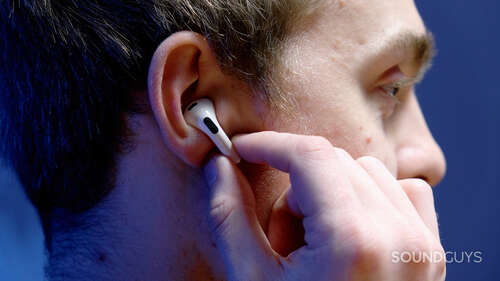
Austin Kwok / Android Authority
TL;DR
- A research team at Google has developed a new technology that can turn any existing ANC earbuds into cardiac monitors.
- Called APG, it’s an acoustic sensing system that can be uploaded to existing earbuds with a software update.
- Google claims it has minimal impact on battery life and even works on earbuds that don’t fit well.
Google has published a research paper detailing a new experimental technology that can turn any existing ANC earbuds into cardiac monitors with the help of a software update. The unique method allows Google to equip noise canceling buds with the ability to monitor heart rate and heart rate variability without the need for additional health monitoring sensors.
The paper is titled “APG: Audioplethysmography for Cardiac Monitoring in Hearables” and describes how the novel innovation works (h/t 9to5Google). Google says APG is an acoustic sensing system that sends a low-intensity ultrasound probing signal using the speakers on ANC earbuds and headphones and receives the echoes via the onboard microphones. The company also built a mathematical model to then analyze and convert the ultrasound echoes into heart rate readings.
“We observed that, as the volume of ear canals slightly changes with blood vessel deformations, the heartbeats will modulate these ultrasound echoes,” Google writes in the paper’s abstract.
Google conducted an eight-month field study with 153 participants to evaluate APG.
The tech even works to monitor cardiac activity when music is playing on the earbuds and when the body is in motion while doing activities like running. According to Google, APG is also resilient to factors like skin tone variation, a sub-optimal seal of the ear, and ear canal size. The company also claims that the tech has negligible impact on the battery life of ANC buds.
Does it work in real life, though? The answer is Yes. Google conducted an eight-month-long field study with 153 participants to evaluate APG under various conditions. It found that the tech presents a high level of accuracy while reporting heart rate readings (3.21% median error) and heart rate variability readings (2.70% median error). The research team’s findings were further reviewed by Google’s internal health team, product team, user experience (UX) team, and legal team, so it sounds pretty solid.
Google’s research team will now focus on testing APG with more rigorous motion activities like hiking, weightlifting, boxing, and HIIT (high-intensity interval training) to improve the performance of the tech.
“We envision that APG could enable many other exciting health research as the APG waveform contains lots of nuances beyond just HR and HRV,” the research paper noted in its closing thoughts.

